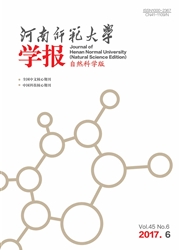

 中文摘要:
中文摘要:
响应可变环境条件,位于叶外皮的警卫细胞能集成并且应付大量的复杂刺激,从而处于一个适当状态的 makingstomata。然而,在警卫房间发信号的许多发信号的部件留下逃犯。在我们的实验室,为非侵略的遥远的红外线的热图象的一个工具被用来在多重压力下面为 Arabidopsis 有气孔的反应异种屏蔽一张乙醇甲烷 sul-fonate-mutagenized 人口(骆驼毛的织物, H_2O_2, CO_2,等等) 。超过四十“热”或“冷”的异种被孤立(在上面或在与正常小植物相对照的 0.5 deg C 下面) 。鉴定和这些异种的主要基因分析证明他们是单基因的后退的变化并且在那里存在在与野类型相比的 stomata 孔的不同差别。响应各种各样的环境压力和荷尔蒙的这些异种包括地被调查,它使我们能进一步在不同信号 transduction 小径理解串音。
 英文摘要:
英文摘要:
In response to variable environmental conditions, guard ceils located in the leaf epidermis can integrate and cope with a multitude of complicated stimuli, thereby making stomata in an appropriate state. However, many signaling components in guard cell signaling remain elusive. In our laboratory, a tool for non-invasive remote infrared thermal images was used to screen an ethyl methane sulfonate-mutagenized population for Arabidopsis stomatal response mutants under multiple stresses (ABA, H2O2, CO2, etc.). More than forty "hot" or "cold" mutants were isolated (above or below 0.5℃ in contrast to normal plantlets). Identification and primary genetic analysis of these mutants show that they are monogenic recessive mutations and there exist distinct difference in stomata apertures compared to wild type. These mutants in response to various environmental stresses and hormones were comprehensively investigated, which enables us to further understand the cross-talk in different signal transduction pathways.
 同期刊论文项目
同期刊论文项目
 同项目期刊论文
同项目期刊论文
 期刊信息
期刊信息
